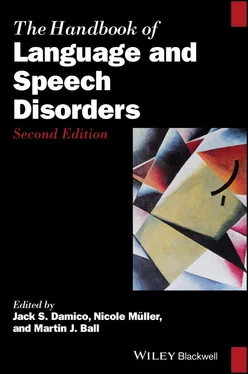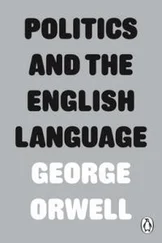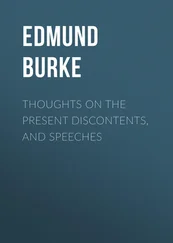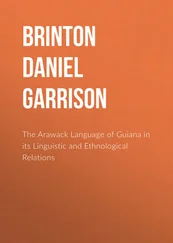69 Rudner, M., Seeto, M., Keidser, G., Johnson, B., & Rönnberg, J. (2019). Poorer speech reception threshold in noise is associated with lower brain volume in auditory and cognitive processing regions. Journal of Speech, Language, and Hearing Research, 62(4S), 1117–1130.
70 Sarant, J. Z., Harris, D. C., Galvin, K. L., Bennet, L. A., Canagasabey, M., & Busby, P. A. (2018). Social development in children with early cochlear implants: Normative comparisons and predictive factors, including bilateral implantation. Ear and Hearing, 39(4), 770–782.
71 Schaette, R., & McAlpine, D. (2011). Tinnitus with a normal audiogram: Physiological evidence for hidden hearing loss and computational model. The Journal of Neuroscience: The Official Journal of the Society for Neuroscience, 31(38), 13452–13457.
72 Scherer, K. R., Banse, R., & Wallbott, H. G. (2001). Emotion inferences from vocal expression correlate across languages and cultures. Journal of Cross‐Cultural Psychology, 32(1), 76–92.
73 See, R. L., Driscoll, V. D., Gfeller, K., Kliethermes, S., & Oleson, J. (2013). Speech intonation and melodic contour recognition in children with cochlear implants and with normal hearing. Otology & Neurotology, 34(3), 490.
74 Sennaroğlu, L., Colletti, V., Lenarz, T., Manrique, M., Laszig, R., Rask‐Andersen, H., … Polak, M. (2016). Consensus statement: Long‐term results of ABI in children with complex inner ear malformations and decision making between CI and ABI. Cochlear Implants International, 17(4), 163–171.
75 Shannon, R. V. (1983). Multichannel electrical stimulation of the auditory nerve in man. I. Basic psychophysics. Hearing Research, 11(2), 157–189.
76 Shannon, R. V. (2002). The relative importance of amplitude, temporal, and spectral cues for cochlear implant processor design. American Journal of Audiology, 11(2), 124–127.
77 Shannon, R. V., Cruz, R. J., & Galvin, J. J. (2011). Effect of stimulation rate on cochlear implant users’ phoneme, word and sentence recognition in quiet and in noise. Audiology & Neuro‐Otology, 16(2), 113–123.
78 Shriberg, L. D., Austin, D., Lewis, B. A., McSweeny, J. L., & Wilson, D. L. (1997). The percentage of consonants correct (PCC) metric: Extensions and reliability data. Journal of Speech, Language, and Hearing Research, 40(4), 708–722.
79 Siegbahn, M., Lundin, K., Olsson, G.‐B., Stillesjö, F., Kinnefors, A., Rask‐Andersen, H., & Nyberg, G. (2014). Auditory brainstem implants (ABIs)—20 years of clinical experience in Uppsala, Sweden. Acta Oto‐Laryngologica, 134(10), 1052–1061.
80 Slepecky, N. (1986). Overview of mechanical damage to the inner ear: Noise as a tool to probe cochlear function. Hearing Research, 22, 307–321.
81 Sundarrajan, M., Tobey, E. A., Nicholas, J., & Geers, A. E. (2019). Assessing consonant production in children with cochlear implants. Journal of Communication Disorders, 84, 105966.
82 Szyfter, W., Pruszewicz, A., Woznica, B., Swidzinski, P., Szymiec, E., & Karlik, M. (1996). The acoustic analysis of voice in patients with multi‐channel cochlear implant. Revue de Laryngologie Otologie Rhinologie, 117(3), 225–227.
83 Torppa, R., & Huotilainen, M. (2019). Why and how music can be used to rehabilitate and develop speech and language skills in hearing‐impaired children. Hearing Research, 380, 108–122.
84 Tremblay, K. L., Pinto, A., Fischer, M. E., Klein, B. E. K., Klein, R., Levy, … Cruickshanks, K. J. (2015). Self‐reported hearing difficulties among adults with normal audiograms: The beaver dam offspring study. Ear and Hearing, 36(6), e290–e299.
85 Ubrig, M. T., Goffi‐Gomez, M. V., Weber, R., Menezes, M. H., Nemr, N. K., Tsuji, D. H., & Tsuji, R. K. (2011). Voice analysis of postlingually deaf adults pre‐ and postcochlear implantation. Journal of Voice, 25(6), 692–299.
86 Uchanski, R. M., & Geers, A. E. (2003). Acoustic characteristics of the speech of young cochlear implant users: A comparison with normal‐hearing age‐mates. Ear and Hearing, 24(1 Suppl), 90S–105S.
87 Verhoeven, J., Hide, O., De Maeyer, S., Gillis, S., & Gillis, S. (2016). Hearing impairment and vowel production. A comparison between normally hearing, hearing‐aided and cochlear implanted Dutch children. Journal of Communication Disorders, 59, 24–39.
88 Waldstein, R. S. (1990). Effects of postlingual deafness on speech production: Implications for the role of auditory feedback. Journal of the Acoustical Society of America, 88(5), 2099–2114.
89 Wang, D., Trehub, S., Volkova, A., & van Lieshout, P. (2013). Child implant users’ imitation of happy‐ and sad‐sounding speech. Frontiers in Psychology, 4(1664‐1078 (Electronic)), 1–8.
90 Wiefferink, C. H., Rieffe, C., Ketelaar, L., De Raeve, L., & Frijns, J. H. M. (2013). Emotion understanding in deaf children with a cochlear implant. Journal of Deaf Studies and Deaf Education, 18(2), 175–186.
91 Wilson, B. S. (2019). The remarkable cochlear implant and possibilities for the next large step forward. Acoustics Today, 15, 53–61.
92 Wilson, B. S., Finley, C. C., Lawson, D. T., Wolford, R. D., & Zerbi, M. (1993). Design and evaluation of a continuous interleaved sampling (CIS) processing strategy for multichannel cochlear implants. Journal of Rehabilitation Research and Development, 30, 110–110.
93 Wilson, I. B., & Cleary, P. D. (1995). Linking clinical variables with health‐related quality of life: A conceptual model of patient outcomes. JAMA, 273(1), 59–65.
94 World Bank. (2019). Life expectancy at birth, total (years). Retrieved from https://data.worldbank.org/indicator/SP.DYN.LE00.IN
95 World Health Organization. (2019). How to use the ICF: A practical manual for using the international classification of functioning, disability and health (ICF). Exposure draft or comment. Geneva, Switzerland: Author. Retrieved from https://www.who.int/classifications/drafticfpracticalmanual.pdf
96 Zeng, F. G. (2002). Temporal pitch in electric hearing. Hearing Research, 174(1–2), 101–106.
4 Intelligibility Impairment
KATHERINE C. HUSTAD 1AND STEPHANIE A. BORRIE 2
1University of Wisconsin–Madison, WI, USA
2Utah State University, Logan, UT, USA
Intelligibility is a critical concern in speech‐language pathology, impacting a wide range of individuals across populations, with ages ranging across the lifespan. For example, intelligibility is an important developmental concern for children who are acquiring speech, including those with and without risk factors for speech impairment (Hustad, Mahr, & Rathouz, 2020). Speech intelligibility impairments in children can stem from speech sound disorders, childhood apraxia, conditions associated with neuromotor involvement or disease (cerebral palsy, childhood brain injury or stroke), genetic etiologies (Down syndrome, cleft palate), or sensory involvement (hearing impairment). In adults, intelligibility remains an important concern for individuals with many of the aforementioned childhood onset etiologies as well as for individuals with adult onset etiologies. Adult onset etiologies include those that have a degenerative course affecting speech motor control (e.g., amyotrophic lateral sclerosis, Parkinson’s disease, Huntington’s disease), those with a recovering course (e.g., stroke, traumatic brain injury during the post‐onset recovery window), and those with a persistent stable course (stroke, traumatic brain injury, cerebral palsy, and other chronic conditions). The field of motor speech disorders has had a particularly notable and longstanding interest in speech intelligibility, in part because reductions in intelligibility are very frequently associated with dysarthria (Darley, Aronson, & Brown, 1969). Improving intelligibility has long been considered a key goal of treatment for this population (Ansel & Kent, 1992).
Читать дальше












